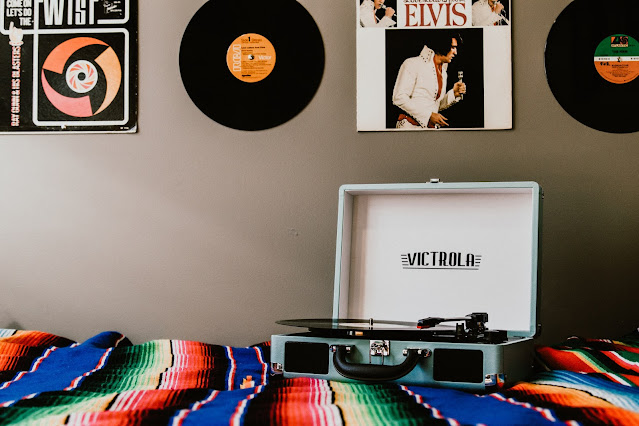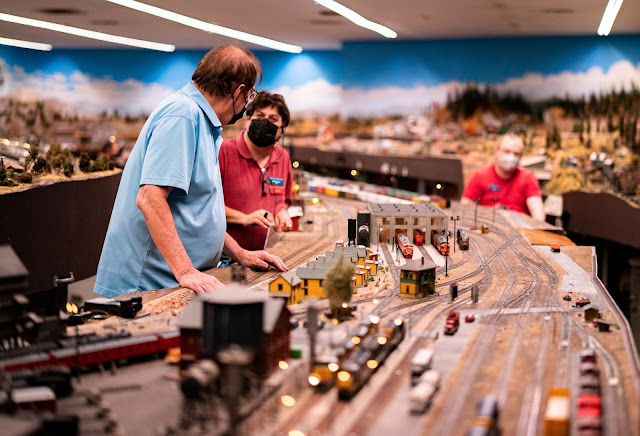6 Things to Ditch Before They Become a Burden for Your Kids
My dad saved film canisters of old Laurel and Hardy movies, thinking they'd be valuable someday. Nope.
My mom saved piles of costume jewelry, thinking my sister and I (or our daughters) would want them. Nope.
It used to be common for parents to pass furniture, china, silver, and other "family heirlooms" to their children, and some Baby Boomers are no doubt planning to do the same. In reality, these pieces may be more of a burden than a blessing for heirs, who do not want them and need to somehow dispose of them.
You thought wrong.
It might be hard to learn that most of the stuff we value isn't valuable.
Even the things we worry about the most, the things we think are so good that we hardly use them for fear of breaking or staining them, have little or no resale value. The market has been flooded with castoffs such as china cabinets, entertainment centers, tea sets, crystal, collectible figurines, and more. Millennials, the next generation of buyers, don't want them.
After all, Millennials have student loans, marry later, move often, and tend to rent for many years before buying a house (if they ever do). They don't want to move a piano, grandfather clock, or fragile once-a-year china from apartment to apartment.
There are three things you might have in your house that currently have some resale value:
- guns
- fine jewelry
- vinyl records (in excellent condition and with the original cover)
Many experts agree that the following items are most likely to bomb as a "valuable inheritance."
6 things to let go
1. "Antique" furniture
If you're saving your great-grandmother's ornate, marble-topped dresser thinking it's a family treasure worth a lot of money, think again. There's been a huge decline in the value of antique furniture. Keith Meissner, of Meissner's Auction in New Lebanon, New York, says "Dressers that used to sell for $1,500 now sell for about $200."
Heavily carved furniture, often called "brown" furniture by modern dealers, is no longer popular. Well-made Mid-century Modern designs are trendy right now, but Gen Xers and Millennials don't care for the older styles. If they do buy antiques, they expect to get them cheap, and paint or otherwise refurbish them.
2. Coin collections
"People get sucked into buying shiny new mint products thinking they will be valuable for their grandchildren, but mint products often sell for less than the purchase price," says Randy Briggs, owner of Coops Coins in Redlands, California. "Most collections just aren't that valuable."
3. Silver
You used to see "We Buy Gold and Silver" signs, but they aren't so common now. Meissner says, "When the price of silver was $34 an ounce, a silver platter would sell for $1,000. Now, at $18 an ounce, silver isn't as popular." And most of the silver you or your parents may own is silver plate, which was never as valuable.
4. China
Experts agree that sets of china don't bring the price people think they will. People just don't do formal entertaining like they did when I was a child, so unless the set has a winter/Christmas theme, it may never be used at all. Charlotte Hall, of Landrum Antiques and Furniture Company in Landrum, South Carolina, says, "People don't want china. You can't give it away."
5. Dolls
"Barbie dolls aren't as valuable as they were 25 years ago," says Hall. Meissner agrees, and adds, "We've seen a big drop in the value of German bisque dolls. The market for these used to be huge, but the younger generation just isn't interested in them."
I totally get that. Those things stare at you.
6. Rugs
In the past, owning an Oriental rug was a status symbol. But with neutral colors currently popular in home décor, they're no longer in demand. Meissner says that truly high-end carpets (hand-knotted silk or wool rugs, for example) hold their value, but prices on mid-range items have dropped dramatically. And let's be honest, what most of us have, or will inherit, is mid-range.
All of us need to let go of the idea that physical possessions represent great value. That was never true, regardless of how much money you might have paid for something. If minimalism teaches anything, it's that possessions are valuable because they're used, and aside from that they're either decorative or in the way (i.e. clutter).
Rather than creating burdens for your children or grandchildren, and hanging on to more than you need for yourself (which is also a burden), now is the time to let go.
You do have things of value to leave to your children: your love, kindness, humor, the skills you taught, and the stories you told. They're worth so much more than furniture, china, or copies of Laurel and Hardy films.
If you're ready to let go of things you don't need or use (or that your heirs won't want after you're gone), you'll appreciate my new book Downsize Now: The Joy of Decluttering For a Fresh Start.*
* This blog is reader-supported. If you buy through my links, I may earn a small commission.
Whether you actually move from your current home into a smaller living space, or simply undertake a radical declutter, it's a challenge. But it's also a chance to reinvent yourself and carry just the essentials into your new life. By releasing decades'-worth of accumulated items, you can emerge with more energy and freedom. You're ready to look ahead, not back.
Downsizing can be hard, or it can be easier. Downsize Now will give you the tools and inspiration to get the job done so you can start enjoying all the benefits.







I’m in my early 60s with children heading into their 40s. My husband and I have been slowly decluttering/downsizing. Some of my criteria for what I keep and what leaves the house may seem a little odd to some people but works well for me so far. Is there anxiety, guilt or unpleasant associations or memories attached to the item? If so, it goes. Do I even notice or get pleasure from the item anymore? For example, about 25 years ago, I bought a large painting in a beautiful frame that I’d been enamored of for 3 or 4 years and scooped it up for what, at that time, was the best price I’d ever seen but was still quite a bit of money for us. That large painting lived in my living room, then my bedroom and finally moved to my guest/workroom. I enjoyed it for 20 of the 25 years I owned it but it finally occurred to me that I no longer SAW it. My eyes no longer stopped and rested on it and drew pleasure from it. I gave it to my daughter who is an artist to use as she saw fit. Thus, I made room for either space for the eye to rest or space for something new. As for my children, I’ve already passed on to them (for the most part) things that they’ve indicated that they’d like to have. As for things that were passed down to me or things that I’ve collected but never used because they were “for nice”….well, I’ve pulled them out and started using them. I’ll use those things and enjoy them until they wear out, fall apart or break because at least that way I’ll have the memories of having enjoyed them rather than regret for keeping them for the nice occasions that never transpired. Nor will I have burdened my children with the task of clearing all of my stuff out when I’m gone. And who knows? Maybe if we use those things on a regular basis with our your loved ones, it will create meaningful memories for them and cause them to want to keep some of those things for themselves when we’re gone instead of them ending up in a landfill somewhere.
ReplyDeleteGood point - if we actually use some of those things we have stashed away, we increase their value to us and our family, instead of letting them go to waste. And if we don't care to use them? Give them (or sell them) to someone who will. Thanks for your great comment!
DeleteThis is all SO true, Karen! At age 74, we've already given our formal dining room set to our elder son & his wife, because they liked it and we downsized when we retired six years ago. (I think we used it two or three times during the ten years we had it.) We have jettisoned many other pieces of furniture over the years (usually at our occasional yard sales or donated to the Salvation Army). Our kids didn't want most of what we offered them, even the hand-embroidered picture plaques or soft toys made by their grandmother or aunts upon their births. So we just sent them pictures of the items, and they were happy with those. I only have a few items inherited from my parents, and my husband has even less from his parents---and we're okay with that. We just hope there are a few tokens that the kids may find amongst our sentimental items when we're gone which will spark some fond remembrances in their minds.
ReplyDeleteI agree let's make our load lighter and move on with life! ❤️
ReplyDelete